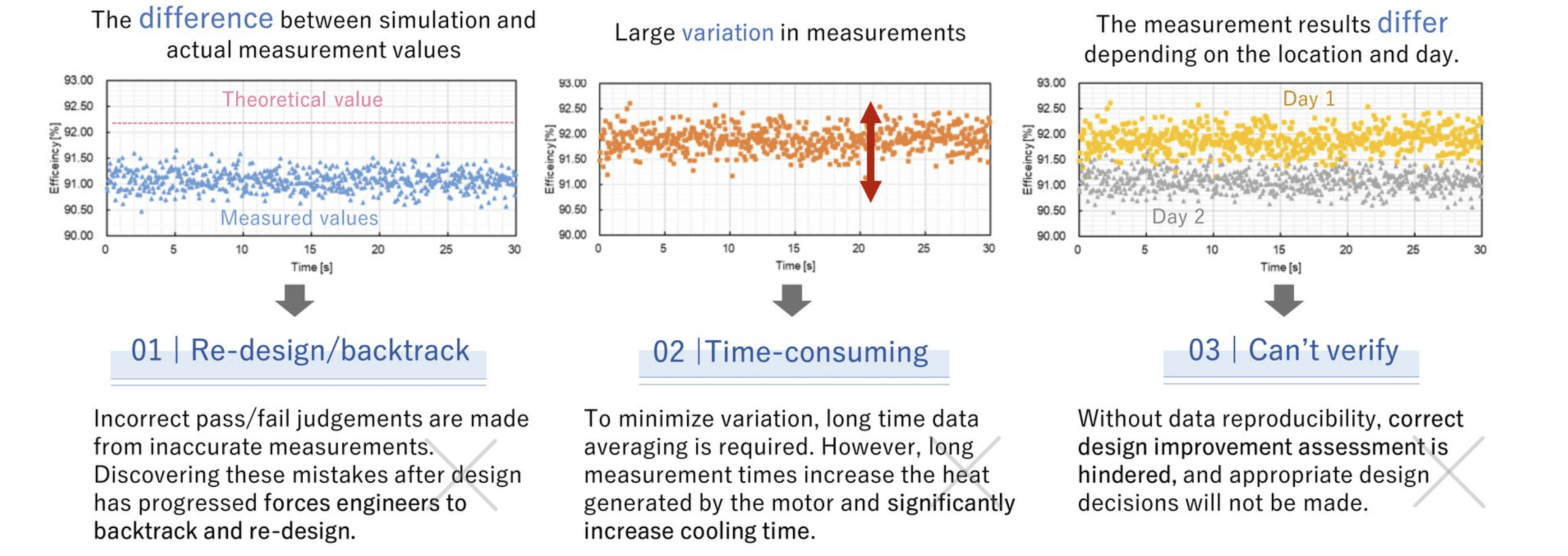

Sponsored by Hioki.
A key problem in creating Battery Electrical Autos (BEVs) is extending the driving vary by means of improved power effectivity. In contrast to fossil fuels, batteries have a decrease power density, necessitating large-capacity batteries to match the vary of inner combustion engines, which inadvertently will increase car weight and reduces power effectivity. Thus, there’s a urgent want for BEVs to attain longer ranges with fewer batteries.
Enhancing driving vary with fewer batteries hinges on enhancing power effectivity by way of high-efficiency and miniaturized powertrains. Excessive effectivity reduces powertrain losses, whereas miniaturization cuts car weight and driving losses. Due to this fact, excessive effectivity and miniaturization of motor drive techniques are important in car electrification. This requires correct measurement of the enter/output energy of inverters and motor energy to understand effectivity and losses.
Adopting wide-bandgap semiconductors like SiC (Silicon Carbide) and GaN (Gallium Nitride) has lately elevated inverter switching frequencies, chopping losses and presenting new alternatives for inverter design and efficiency analysis. Nevertheless, this progress introduces new measurement challenges, creating a requirement for wideband and high-precision energy measurements that conventional strategies can not fulfill. Discover how we deal with these rising challenges and revolutionize BEV improvement.
The Problem
EV engineers on the entrance line of enhancing inverter and motor effectivity incessantly face a number of vital challenges:
- Discrepancies between simulations and precise measurements: Theoretical fashions and real-world operation can differ, complicating design optimization.
- Measurement variability: Inconsistent information beneath equivalent situations and differing outcomes primarily based on environmental components can hinder reliability.
- Excessive-frequency measurement errors: Typical strategies wrestle with errors on account of high-frequency switching frequencies in inverters, making it tough to acquire exact readings.


These challenges are largely on account of measurement errors in high-frequency parts launched by the switching frequency of inverters. Inverter voltage and present waveforms may be segmented into two main frequency bands: the elemental wave and its harmonic parts at 1 kHz or decrease and the switching frequency and its harmonic parts starting from a number of tens of kHz to a number of a whole lot of kHz. Whereas basic energy analyzers can precisely measure the decrease frequency band, they wrestle with the upper frequency band, resulting in vital measurement errors. Because of this, precisely measuring high-frequency energy is essential in inverter improvement, and appropriate measuring devices able to dealing with such measurements are important.
Assembly Trendy Inverter Wants


1. Accuracy
Probably the most vital contributors to measurement errors in high-frequency energy is section error. Conventional energy analyzers paired with normal present sensors typically introduce substantial section errors at excessive frequencies, hampering the precision of measurements for switching frequencies and their harmonic parts. Nevertheless, Hioki has the benefit of creating its present sensors, permitting for a complete understanding of their distinctive traits. This deep information allows distinctive section correction, guaranteeing correct measurements even in high-frequency domains. This prowess considerably elevates the accuracy of evaluating the high-frequency traits of inverter and motor drive techniques, bolstering the reliability of improvement and efficiency assessments.
2. Stability
A key contributor to measurement instability is aliasing. Basic energy analyzers, with a sampling frequency of 10 MHz and a frequency band of 10 MHz, fall wanting the required sampling frequency—not less than double the frequency band for exact measurements—resulting in aliasing errors. Conversely, HIOKI’s PW8001 boasts a formidable 15 MHz sampling frequency, supporting wideband measurement of 5 MHz and successfully stopping aliasing. This ensures constant and dependable outcomes, even throughout prolonged measurement durations.
3. Reproducibility
Basic present sensors could exhibit fluctuating measurement values in high-frequency ranges as a result of affect of conductor place. If measurement values differ every time, it might be on account of misalignment of the conductor place. HIOKI’s present sensors make use of a novel coil and defend construction, enabling measurements that aren’t affected by conductor place even in high-frequency ranges. This innovation permits for reproducible and correct measurements.
Elevate Your EV Initiatives
Hioki’s PW8001 units itself other than conventional testers by offering correct, steady, and reproducible high-frequency energy measurements. For EV engineers and lovers devoted to advancing EV expertise, the PW8001 is an indispensable instrument that ensures precision and reliability in powertrain improvement.
Discover our options to be taught extra about future-proofing your powertrain take a look at amenities and embrace the electrifying way forward for mobility.


